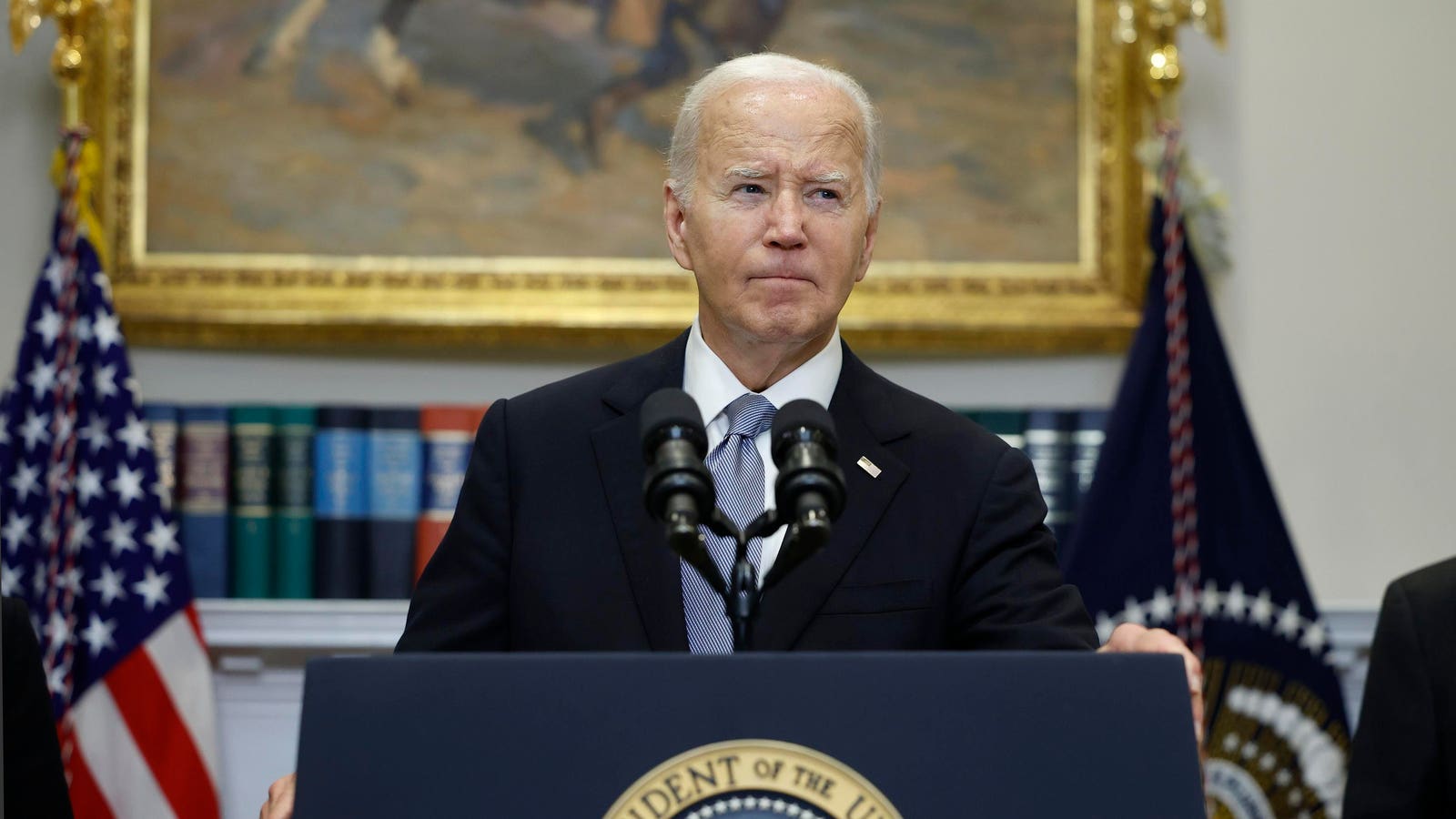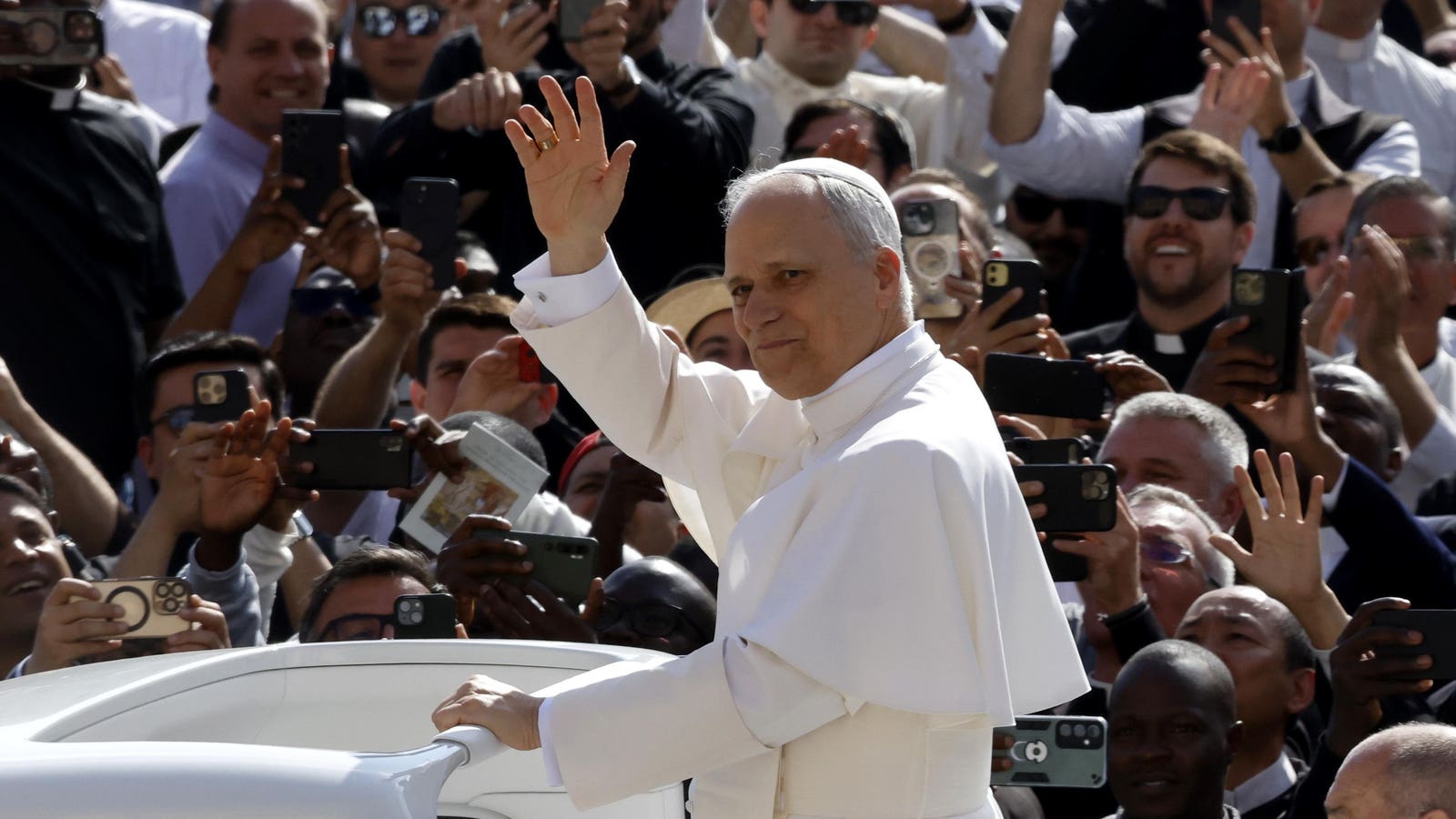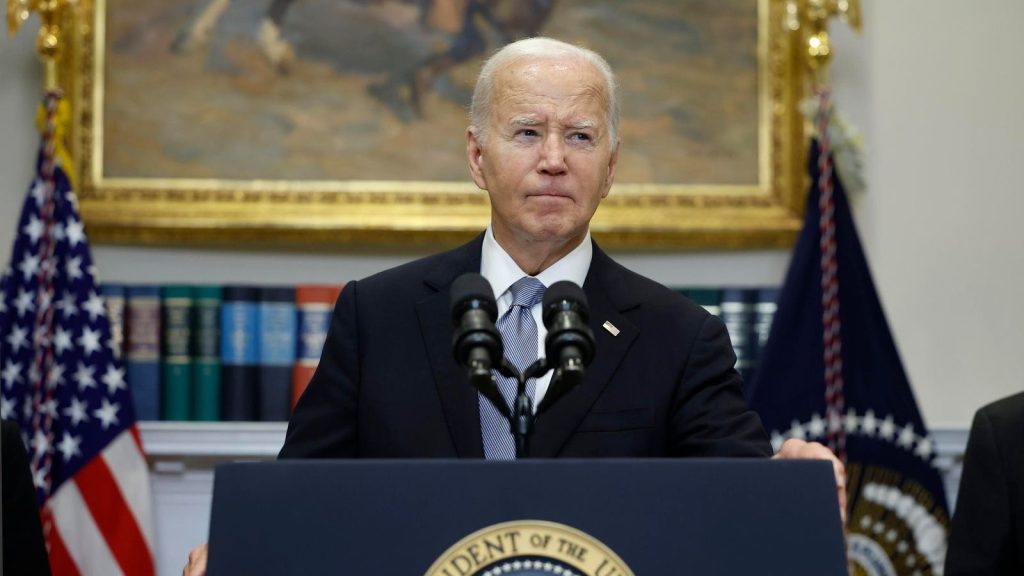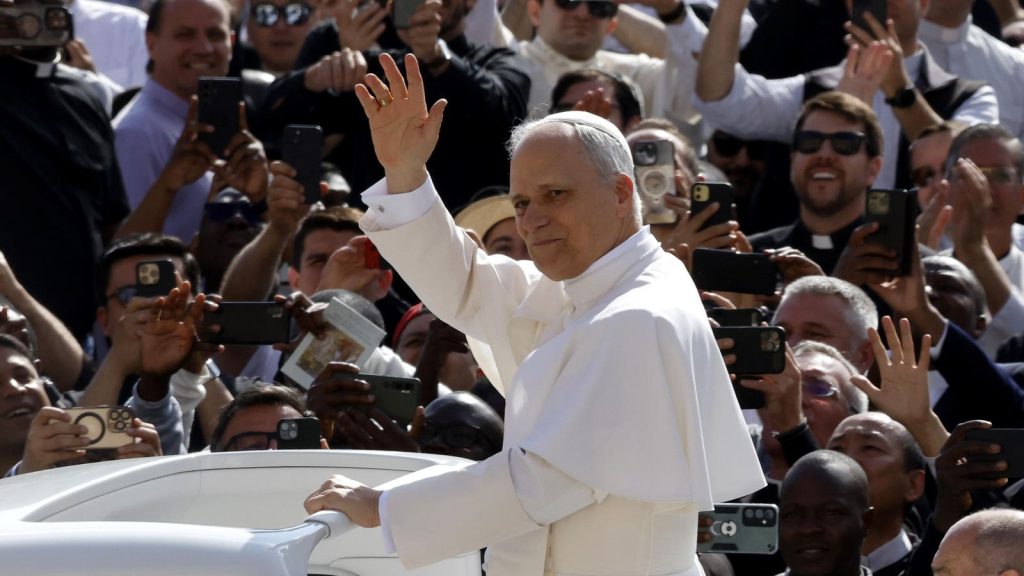Topline
The tariff rates unveiled by President Donald Trump on Wednesday stems from a simple formula based on U.S. trade imbalances with other countries—not the tariff rates they charge the U.S., along with “currency manipulation and trade barriers,” as the White House initially claimed.
President Donald Trump holds a chart as he announces a plan for tariffs on imported goods during an … More event Wednesday, April 2, 2025, in the Rose Garden at the White House. (Photo by Demetrius Freeman/The Washington Post via Getty Images)
Key Facts
Trump, debuting rates including 54% for China, 20% for the European Union and 26% for India, said the figures were based on “the combined rate of all their tariffs, non-monetary barriers and other forms of cheating” that was then divided in half because Trump wanted to be “kind.”
Analyses posted on social media and in news articles determined the numbers were based on a much more simplistic calculation made by dividing a country’s trade surplus (representing the value by which a country’s exports exceeds the cost of its imports from the U.S.) by its total export value, then multiplying the figure by 0.5.
The formula matched the tariffs Trump debuted for China, the European Union, Indonesia, India and Vietnam, Ian Bremmer, a global political scientist and founder of Eurasia Group consultancy firm, pointed out on X, writing “this is…incredibly stupid.”
China, for example, had a trade surplus of $295 billion with the U.S. last year, with $438 billion worth of goods exported to the U.S.—$295 billion divided by $438 billion is equal to 67%, and divided in half equals the 34% tariff rate Trump debuted Wednesday.
The Office of the U.S. Trade Representative later confirmed the formula by publishing what appears to be a complex math equation for calculating the tariff rates, but when stripped of its Greek letters, shows it’s essentially based on countries’ trade surpluses with the U.S. divided by their export value then divided in half.
The approach suggests countries could lower their tariffs by buying more U.S. products, which would be “very difficult for Asian, particularly poorer Asian countries, to meet US demand . . . given that U.S. goods are much more expensive, and the purchasing power is lower for countries targeted with the highest levels of tariffs,” Natixis senior economist Trinh Nguyen told CNBC.
Chief Critics
“If the Trump administration didn’t calculate the “tariff rates” other countries are supposedly imposing on us by using the formula trade deficit/imports, it’s an amazing coincidence that every single country’s “tariff rate” is equal to trade deficit/imports,” economic journalist James Surowiecki wrote on X. Thomas Sampson of the London School of Economics told the BBC “the formula is reverse engineered to rationalise charging tariffs on countries with which the US has a trade deficit. There is no economic rationale for doing this and it will cost the global economy dearly.”
Contra
Some policy analysts suggested that the White House quickly calculated the rates as a starting point for negotiations with its trading partners, without having to deal with the complexity of calculating the actual cost of the trade barriers each country imposes on the U.S. “All I can say is that the opaqueness surrounding the tariff numbers may add some flexibility in making deals, but it could come at a cost to US credibility,” Rob Subbaraman, head of global macro research at Nomura, told CNBC.
Tangent
Other details in Trump’s approach were widely panned as nonsensical, such as imposing 10% tariffs on remote and uninhabited territories like the Heard and McDonald Islands, a remote Australian territory that has a population of zero and imports no goods to the U.S.
What To Watch For
Russia, Canada and Mexico were left out of Wednesday’s announcement. The omission of Canada and Mexico were less of a surprise as Trump had already imposed, then delayed, a 25% tax on products from the U.S. neighbors. Russia was left out because existing U.S. sanctions “preclude any meaningful trade,” White House Press Secretary Karoline Leavitt told Axios, which noted the U.S. still trades more with Russia than some of the remote islands and territories where tariffs were imposed. Leavitt also pointed out to Axios that Cuba, Belarus and North Korea were not hit with reciprocal tariffs because they are already subject to existing sanctions and tariffs.
Key Background
The 10% baseline tariffs Trump announced Wednesday will take effect Saturday and the other reciprocal tariffs will take effect Wednesday, according to a White House fact sheet. A 25% previously announced tariff on imported vehicles is also set to take effect Wednesday. The tariffs were significantly higher for some countries than the 20% across-the-board rate Trump previously suggested he’d impose. China, for example, was hit with an additional 34% “reciprocal” tariff, in addition to the 20% levy Trump had already imposed. Stocks plummeted Thursday in the wake of the announcement, with the Dow Jones Industrial Average falling 3.5%, the S&P 500 down 3.9% and Nasdaq dipping 4.9%.
Further Reading
Markets Shudder: Here’s What Stocks Are Losing The Most In Tariff Selloff (Forbes)
Trump Announces Reciprocal Tariff Rates—54% For China, 20% On EU (Forbes)
Trump’s Tariffs Tip Economy ‘Perilously Close’ To A Recession, Largest U.S. Bank Warns (Forbes)











